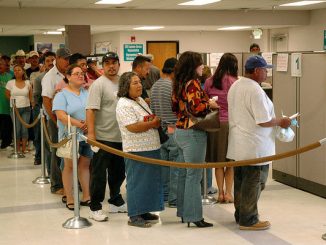
Reuters Health – The United States needs to curb excessive opioid prescribing and improve access to pain management techniques, suggests a new government study.
Researchers found that more than one third of U.S. adults were prescribed the medications in 2015 and many also misused the drugs.
“A very large proportion and large number of adults use these medications in a given year,” said study author Dr. Wilson Compton, deputy director of the National Institute on Drug Abuse in Bethesda, Maryland. “I was still a bit surprised that 38 percent or about 92 million people used prescription opioids in 2015.”
Limited data on the prescription of opioids and their abuse are available despite the number of deaths from drug overdoses in the U.S. having quadrupled between 1999 and 2015, Compton and his colleagues write in the Annals of Internal Medicine, online July 31.
For the new study, the researchers analyzed data from 51,200 adults collected in 2015 during face-to-face interviews for the National Survey on Drug Use and Health.
Based on those interviews, the researchers estimate about 38 percent of U.S. adults were prescribed an opioid in 2015.
People who were between ages 18 and 49 years, men or college graduates were less likely to have been prescribed opioids than those who were older, female or not college graduates.
About 5 percent of U.S. adults were misusing opioids by not following a doctor’s orders. Misuse could range from not using the drugs as directed or using the them without a prescription.
The researchers also estimate that about 1 percent of adults, or about 1.9 million Americans, had an opioid use disorder.
Opioid misuse and use disorders were more common among people with lower family incomes, without health insurance or without jobs.
About 64 percent of the survey participants who had misused opioids said they did so most recently to relieve pain. About 41 percent said they got the drugs from family or friends.
Based on data from private insurance, Compton told Reuters Health, future surveys may show a decline in opioid prescriptions.
“We have seen since 2010 about a 20 percent decline, but that’s not a major reduction,” he said.

